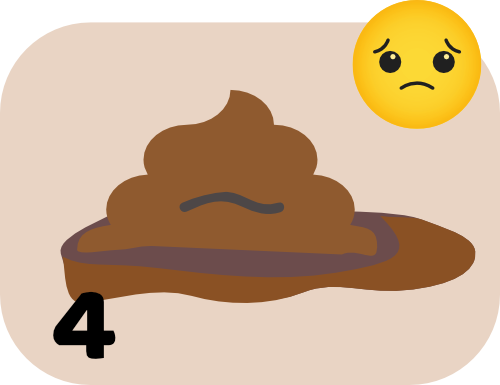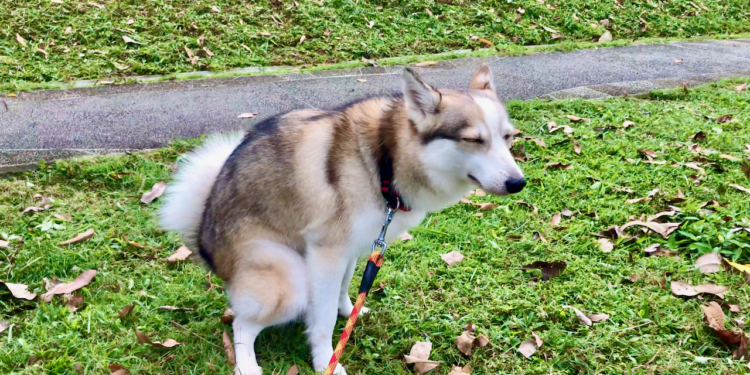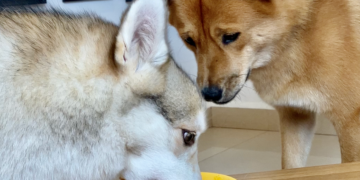Our dogs’ stools are indicators of how their gut is doing. What goes in determines what comes out. Adjustments to what they are fed may be needed if texture, colour and smell are not ideal.
Our experience with poop comes from Riley’s sensitive gut.
Kiko has a cast iron stomach and almost never has loose stools. She grew up on a healthy mix of homemade food, quality air dried puppy food and stealing stuff from the garden that was supposed for compost.
In comparison, Riley’s gut took a year to stabilise. She was fed commercial dog food from young and never went outdoors. When we adopted her, she had soft stools regularly and was picky with food. After two years of diverse foods ranging from homemade to air-dried to raw, her gut is stronger and happier. Her stools are now firm and well formed most of the time.
Here is some guidance on good vs not-so-good stools. Stool conditions are numbered 1 to 5.

#1 ~ Dry balls
- hard
- dry
- leaves no stains, marks, residue
We used to think hard round stools were good until we observed that it takes a lot of effort to poop these out. Hard and dry, easy to pick up balls are possible indicators of constipation, insufficient water content or too much insoluble fibre in the diet.
Increase the moisture and soluble fibre levels in diets to help soften stools.

#2 ~ Firm poop
- firm & moist
- segments clumped together
- easy to pick up
Attention may be needed if the stools are bordering on dry. Adding more moisture and soluble fibre may be needed to prevent stools turning into a #1.

#3 ~ Moist logs
- firm & moist
- log or long shaped
- mostly maintains shape when picked up
If there is a strong odour, it may be an indication of poor quality ingredients. If the stools look oily, try reducing the amount of fat in the diet. If stools are bordering on too soft, it may be an indication of too much soluble fibre in the diet.

#4 ~ Mild diarrhoea
- wet & soggy
- piled shape or very loose shape
- looses form easily when picked up
- noticeable-to-strong odour
Insufficient insoluble fibre or the gut not agreeing with something eaten. Our vet advised us to add probiotics regularly to help strengthen the gut. Our approach with Riley was meals with bone broth & regular additions of greek yoghurt for half a year.
Mashed steamed pumpkin with a pinch of ground turmeric helps tremendously.

#5 ~ Bad diarrhoea
- watery
- settles into puddles
- strong odour
Riley instinctively stops eating for 12 to 24 hours after she does a #5. Gut rest and bland foods help her stomach recover. When we feed foods that are easier on their gut for a few days, their stools turn to a #4, then #3 quite quickly.
Mashed steamed pumpkin with bone broth and a pinch of ground turmeric helps tremendously.
COLOUR
Colour can change depending on what they eat. Beets can turn stools black. Turmeric may turn stools yellow. Grey oily stools may be an indication of too much fat.
If your dogs’ stools are not ‘normal’ for more than 36 to 48 hours, you should get things checked by your vet.
If You Enjoyed Our Content
please consider buying us a coffee / sending us dog treats



